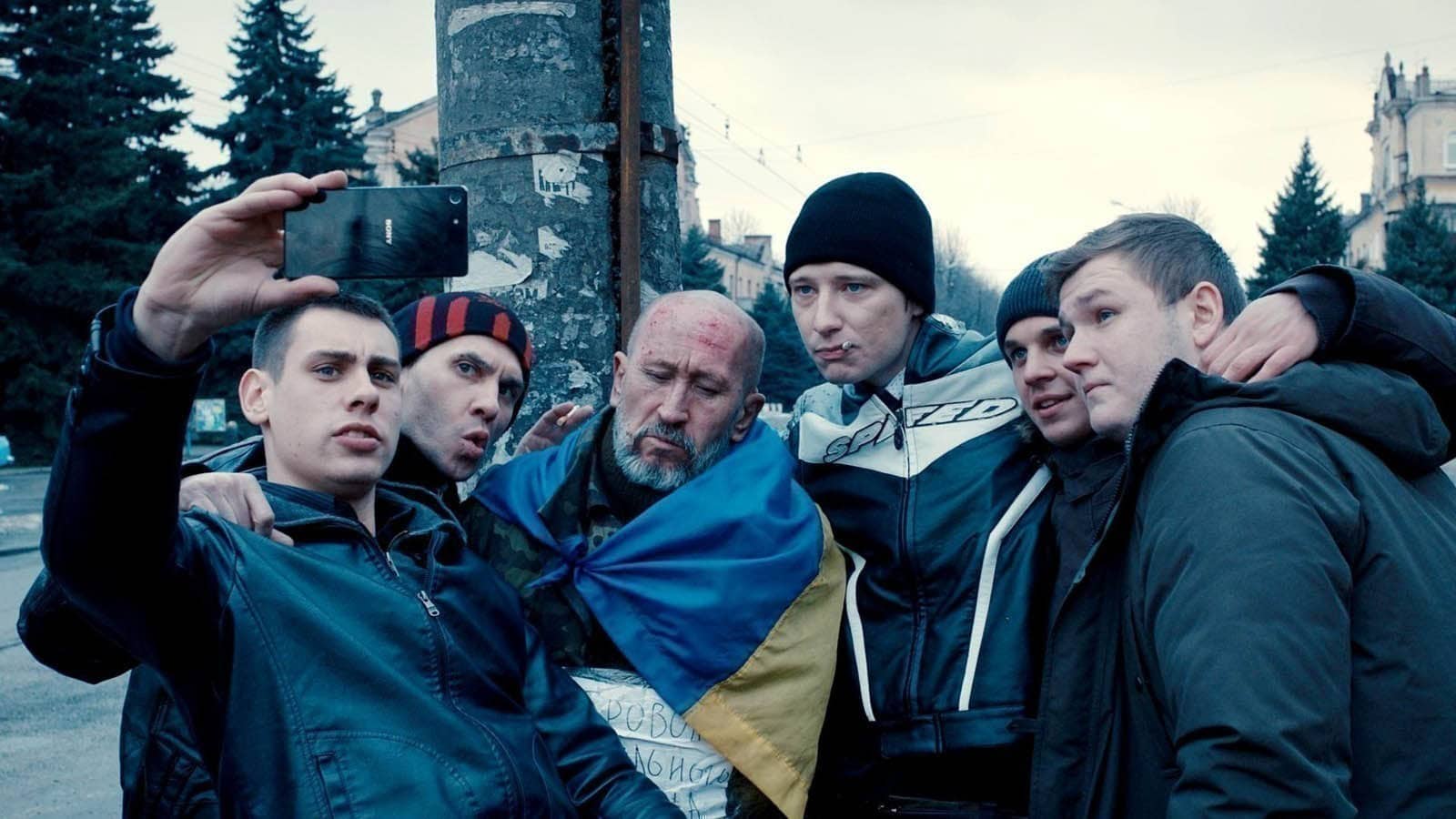Director Sergei Loznitsa’s Donbass adopts a sprawling, vignette-driven structure as it catalogues the miseries and grotesqueries of the eponymous eastern Ukrainian territory. A region occupied by pro-Russian paramilitary forces (specifically the Donetsk and Luhansk People’s Republics) ever since the Ukrainian Revolution in 2014, present-day Donbass is a morass of conflicting sympathies and ideologies that Loznitsa doesn’t so much seek to clarify with this documentary as reflect in all its muddy complexity.
In fact, Loznitsa goes so far as to call into question the very possibility of the truth of this situation he captures on camera. Whenever reporters appear on screen, they’re portrayed as ineffectual stooges waiting to be chewed out as propaganda peddlers by their political opponents, and the film’s bookending sequences, set at the trailer park of a movie set, build toward a thesis statement on the dubiousness of contemporary reporting with its tendency to stage and reframe reality according to the mandates of whatever affiliation is being placated.
Throughout, we’re repeatedly reminded that cameras are violators, as they merely augment the dangerous power of the person wielding them. And Donbass’s most harrowing elucidation of this theme comes in a scene on a public street, where a Ukrainian loyalist, tied to a telephone pole by a pair of armed separatists, endures a humiliating beating at the hands of a growing mob of passersby, one of whom decides to record the spectacle with his smartphone.
Related Story
Babi Yar. Context Brings Sobering Context to a Massacre
As Loznitsa’s camera circles the grisly action, the heckler’s phone presses right up into the face of the prisoner, relishing in the man’s suffering, and the viewer gets the sense that the escalation of violence may have never come to pass in quite this way were it not for the spontaneous idea to turn it into a video meme. Later, the recording gets shown to a hooting crowd of Novorossiya sympathizers at an absurdly overemphatic wedding celebration, assimilating smoothly into the atmosphere of nationalist fervor.
Donbass is fueled by such collisions between the grave and the comic, a tonal oscillation that’s crucial to the film’s vision of a society cracking under the weight of its own inconsistencies, corruption and mob mentalities. Less tightly structured than Loznitsa’s preceding fiction work, Donbass adopts the immersive observation of documentaries like Maidan and Victory Day with a more active, roving camera but a similar degree of durational endurance.
In one scene, Loznitsa even seamlessly integrates an extended use of documentary language into a longer fictional setup when his camera descends into a cramped and overcrowded bomb shelter, where a local host walks us through the destitution of those living inside. As with the later street scene, the dreariness is eventually spiked by a dash of absurdism, but the counterpunch isn’t intended to lighten the mood so much as further disorient, giving Donbass an unnerving precarity that must come somewhat near the feeling on the ground.
Since 2001, we've brought you uncompromising, candid takes on the world of film, music, television, video games, theater, and more. Independently owned and operated publications like Slant have been hit hard in recent years, but we’re committed to keeping our content free and accessible—meaning no paywalls or fees.
If you like what we do, please consider subscribing to our Patreon or making a donation.





